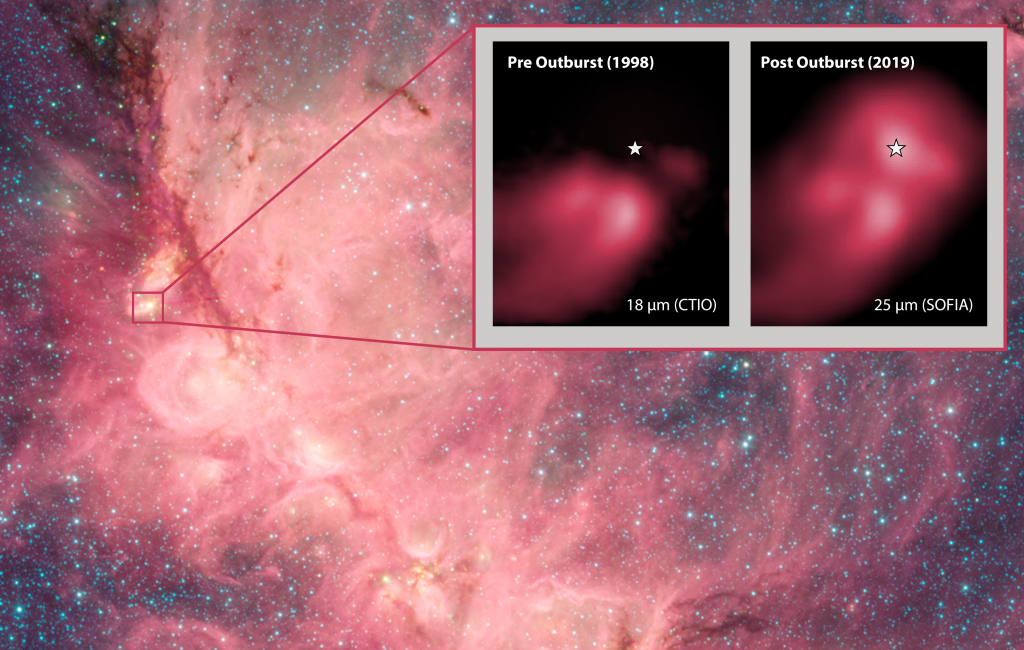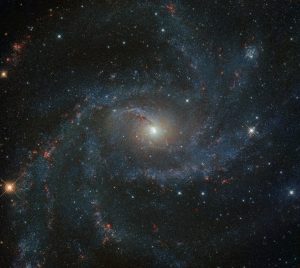NASA’s Stratospheric Observatory for Infrared Astronomy, or SOFIA, landed at Fa’a’ā International Airport, outside Papeete, Tahiti, French Polynesia, July 19, 2021, to study celestial objects best observed from the Southern Hemisphere. SOFIA regularly deploys to the Southern Hemisphere to observe objects only visible from this part of the world. Typically, SOFIA flies from Christchurch, New Zealand. However, due to COVID-19 travel restrictions, French Polynesia was identified as the right location to continue groundbreaking science to better serve the scientific community.

SOFIA will operate from French Polynesia to observe highly important objects that cannot be seen from the Northern Hemisphere. An advantage of winter is that the water vapor in the Earth’s upper atmosphere is much lower during the months of July through September at Southern Hemisphere latitudes, compared to the Northern Hemisphere’s summer months.

Among the many objects best seen from Southern Hemisphere latitudes, SOFIA will be looking at the central-most regions of our galaxy, the Milky Way.

For the next eight weeks, 20 flights are planned with the German Receiver at Terahertz Frequencies, or GREAT, instrument, which is operated by the Max Planck Institute of Radio Astronomy in Bonn and the University of Cologne, both in Germany. Additionally, the SOFIA team plans to use the High-resolution Airborne Wideband Camera-Plus, or HAWC+, to observe important astronomical targets in the southern skies.
During the GREAT flight series, the team will search for gases that can reveal the presence of cosmic rays, highly energetic charged particles that stream through our Milky Way galaxy. When a hydrogen atom combines with another element, such as argon or oxygen, simple molecules called hydrides are formed, some of which can be used to find cosmic rays. While cosmic rays can be detected directly within our solar system, astronomers know much less about their presence elsewhere in space. By measuring the concentration of hydride molecules, SOFIA’s observations will help researchers understand how common cosmic rays are in different parts of our galaxy, providing clues about the origin of these mysterious particles.
SOFIA will also make new measurements of atomic oxygen in Earth’s atmosphere, building on the success of previous observations. SOFIA is the only observatory capable of measuring atomic oxygen in this region of Earth’s atmosphere and these observations are important for understanding climate change. Atomic oxygen, a particular form of unbonded oxygen, plays an important role in cooling the upper atmosphere and, therefore, is used to estimate temperatures in this region. Climate models predict that increasing greenhouse gases will raise temperatures in the lower atmosphere yet decrease temperatures in the mesosphere. These continued observations will allow a team of German scientists to monitor the seasonal and latitudinal variability of atomic oxygen, leading to a more accurate understanding of the relationship between the lower and upper atmosphere.

At the end of August, HAWC+ will be installed and flown for an expected total of 12 flights. The scheduled flights include the first observations of the Study of Interstellar Magnetic Polarization: a Legacy Investigation of Filaments. This new program focuses on the observation of high-gas-density, thread-shaped regions called filaments, where most stars form. The scientific team will make maps of star-forming regions relatively close to Earth. These maps will help constrain the relative importance of self-gravity, turbulence, and magnetic fields. The most exciting aspect of this project is the wide variety of spatial scales that will be observed. At the end of this program, the scientific team will better understand the role of magnetic fields in star formation, from large star-forming regions down to the scale of planet-forming disks.
The SOFIA team also plans to observe the galactic center using HAWC+ to understand the magnetic fields in our own galaxy. This work will complement the previous successful SOFIA Legacy Program which mapped much of the Milky Way using another SOFIA instrument. These multiple views of our galaxy will help scientists better understand the role of magnetic fields in star formation and in the regions of the galaxy closest to the central supermassive black hole.

The process of operating from a temporary base, called a deployment, involves relocating the SOFIA aircraft and observing instruments, storage and cooling equipment, and, of course, moving critical personnel for several weeks and sometimes months at a time. It requires an active partnership and high level of coordination with local authorities, airport facilities, and workforce, as well as local vendors.
Detailed flight plans for the southern deployment series are posted on the SOFIA Science Center website.
Media inquiries regarding SOFIA’s southern deployment should be sent to the NASA Ames newsroom.
SOFIA is a joint project of NASA and the German Space Agency at DLR. DLR provides the telescope, scheduled aircraft maintenance, and other support for the mission. NASA’s Ames Research Center in California’s Silicon Valley manages the SOFIA program, science, and mission operations in cooperation with the Universities Space Research Association, headquartered in Columbia, Maryland, and the German SOFIA Institute at the University of Stuttgart. The aircraft is maintained and operated by NASA’s Armstrong Flight Research Center Building 703, in Palmdale, California.


